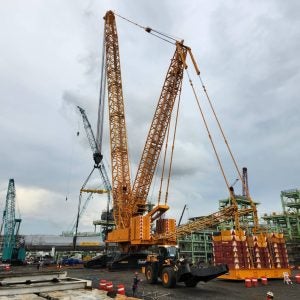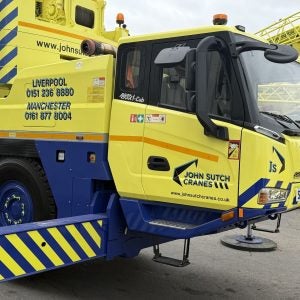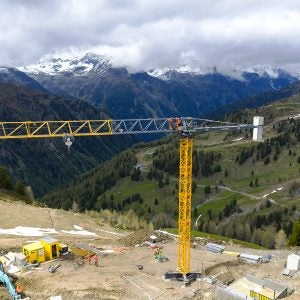Indoor electric overhead traveling (EOT) process cranes are essential in many industries, such as waste handling and intralogistics. Facilities place significant demand on these cranes, including switching between maximum speed travel and a full stop hundreds of times per shift in a repeating control profile. This rapid pace of movement can introduce issues during all aspects of operation, including travel and hoisting.
Fortunately, new drives for motion control, such as ABB’s ACS880 industrial variable speed drives (VSDs) – also known as variable frequency drives (VFDs) or simply drives – offer dedicated control position programs. These drives include built-in features to maximize the accuracy of the movement and eliminate the need for additional equipment. They also create the opportunity for EOT cranes to run autonomously.
Fully automated cranes can increase throughput, reduce costs, provide greater energy efficiency, and make facilities safer. Importantly, operators remain in the loop to monitor activity and override the system when necessary, but they no longer need to micromanage each crane by using a joystick.
Two control logics in one drive
Traditionally, position control and anti-sway functionality have been used with several separate external elements, such as automation controllers. Integrating these technologies into a single drive reduces complexity and makes automation possible. The result is a faster control loop and a more cost-effective solution compared to today’s approach.
ABB’s ACS880 industrial drives offer a built-in position control program for precise crane operation. In addition to the position target control in the drives, the sensorless anti-sway feature helps prevent the load from swinging. The drive continuously collects data from the motor or the load encoders that are part of a closed-loop system. It then communicates this in real time to the programmable logic controller (PLC), which receives the target position of the crane’s movement. This enables the drive to perform sequenced movements extremely accurately and precisely.
Machine builders can easily program the cranes using ABB’s AC500 PLC and Human Machine Interface (HMI), making automation more accessible.
The ACS880 industrial drives also offer a built-in drive to drive feature that connects and coordinates two or more drives in a master-follower configuration. This enables several motors to work together for load sharing, and it is ideal for drives that operate multiple motors mounted on a common drum in the crane.
Safer operations of crane movement
Several features ensure safe operation of the EOT crane in autonomous mode. ABB’s drive-based and PLC-based TÜV-certified functional safety options help guarantee safety for people and property. Integrated safety solutions in drives include Safe Torque Off (STO) as standard, the optional safety functions modules FSPS-21, FSO-12 or -21, and the FSE-31 pulse encoder module. Together they help to eliminate the need to use hardwired safety devices with drives, increasing reliability and reducing costs. The AC500-S Safety PLC provides additional safeguards. Its complete range of safety trigonometric functions and ability to handle floating-point data are ideal for crane applications. The AC500-S also has a separate CPU for safety functions, enabling it to remain active even when the non-safety control system is not in use.
These safety options are ideal for use with fully automated cranes, as they ensure that the system remains within limits defined by the design and/or operator. They can also be used to establish restricted safety zones, providing additional safety for employees working in the vicinity of the crane.
Greater control for smarter cranes
Purpose-built drives with built-in precision and safety features are the key to enabling cranes to operate autonomously. As fully automated EOT process cranes become more common, these features are the key to operating the movement of loads quickly, safely, and efficiently.
Learn more about ABB’s crane control solutions at: https://new.abb.com/drives/segments/cranes






